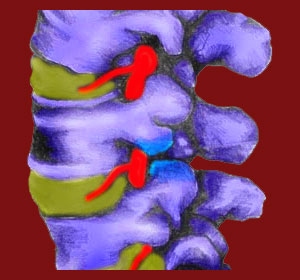
Prolotherapy for facet syndrome offer a minimally invasive, organic therapy option for patients with certain types of zygapophyseal pain. Prolotherapy is utilized for a wide range of health complaints and is well known in the battle against back and neck pain.
Prolotherapy is still very mysterious to most laymen and some patients have never even heard of it. We receive considerable correspondence from readers who were advised to consider prolotherapy and wanted to know more about the treatment, including its benefits, risks and potential rewards for facet joint pain.
This dissertation provides complete coverage of facet joint prolotherapy injections. We will examine the nature of the treatment and evaluate its pros and cons to assist patients in making informed choices when it comes to selecting the best care options for their diagnosed facet joint symptoms.
What is Prolotherapy for Facet Syndrome?
Prolotherapy is an organic injection therapy that does not utilize pharmaceutical drugs. Instead, the therapy is designed to elicit a natural healing response by irritating the tissue in order to facilitate increased circulation and immune response. Typically, the substances utilized for prolotherapy include purified cod liver oil or sterile sugar solution. However, there are now many options for organic irritants that will serve the intended purpose with minimal risk for complications.
Prolotherapy has not enjoyed much verified scientific efficacy, but this has not deterred its growth. In fact, the treatment is now used for hundreds of indicated diagnoses ranging from skin disorders to musculoskeletal pain syndromes. Being that drugs are not involved, the practice is also less regulated than pharmacological injections in some regions of the world, making it more available and less expensive for patients to afford.
Prolotherapy Benefits
When it comes to facet joint pain, benefits provided by prolotherapy are certainly very subjective and unproven. Most care providers who provide such injections claim that the natural irritants help to decrease arthritic activity, as well as the consequences of arthritic activity. Some go so far as to claim that prolotherapy might help to reduce the growth of arthritis in the facet joints.
Another common claim is that prolo injections might help to rebuild lost cartilage in the facet joints and even encourage better movement by lubricating the joint. Care providers typically do not make any claims about pain relief, since reduction of acute symptoms is not a goal of prolo treatment.
The one benefit we can verify for sure is that the injections do not use chemicals that are considered toxic to the body, but instead, merely irritating. Prolotherapy also does not involve the same systemic toxins introduced into the body by pharmaceutical injection products.
Prolotherapy for Facet Syndrome Risks and Limitations
Prolotherapy injections are known to be painful when given, as well as for a considerable time afterwards, since they are irritating substances after all. The primary therapeutic goal is to basically make the region uncomfortable in order to facilitate healing. However, the process escalates pain significantly for many patients in the short-term.
There is no proof that prolotherapy does anything at all to mitigate or prevent facet joint degeneration or injury. Some forms of trauma might be benefitted by facet injections, but science has yet to define exactly which varieties of injury might improve and which might simply hurt a lot more post-treatment.
Prolotherapy is an invasive care practice and as such, does demonstrate significant risks, especially since it is directed at the spinal column in this application. Some of the risks are presented and detailed below:
Infection might occur, especially when the irritating substances are not sterile. Infection in the spine is a very serious occurrence and can lead to serious injury, neurological damage, meningitis or death.
Nerve or spinal cord damage can occur if the injection encounters any of these tissues.
Spinal fluid leaks may occur if the needle punctures the membranes that house the central neurological tissues.
Most of these risks are uncommon, but are occasionally seen, particularly in cases where non-physicians or general practice physicians administer the treatment. The use of fluoroscopy should improve administration accuracy and reduce risks substantially.
Facet Joint Pain > Facet Joint Treatment > Prolotherapy for Facet Syndrome





